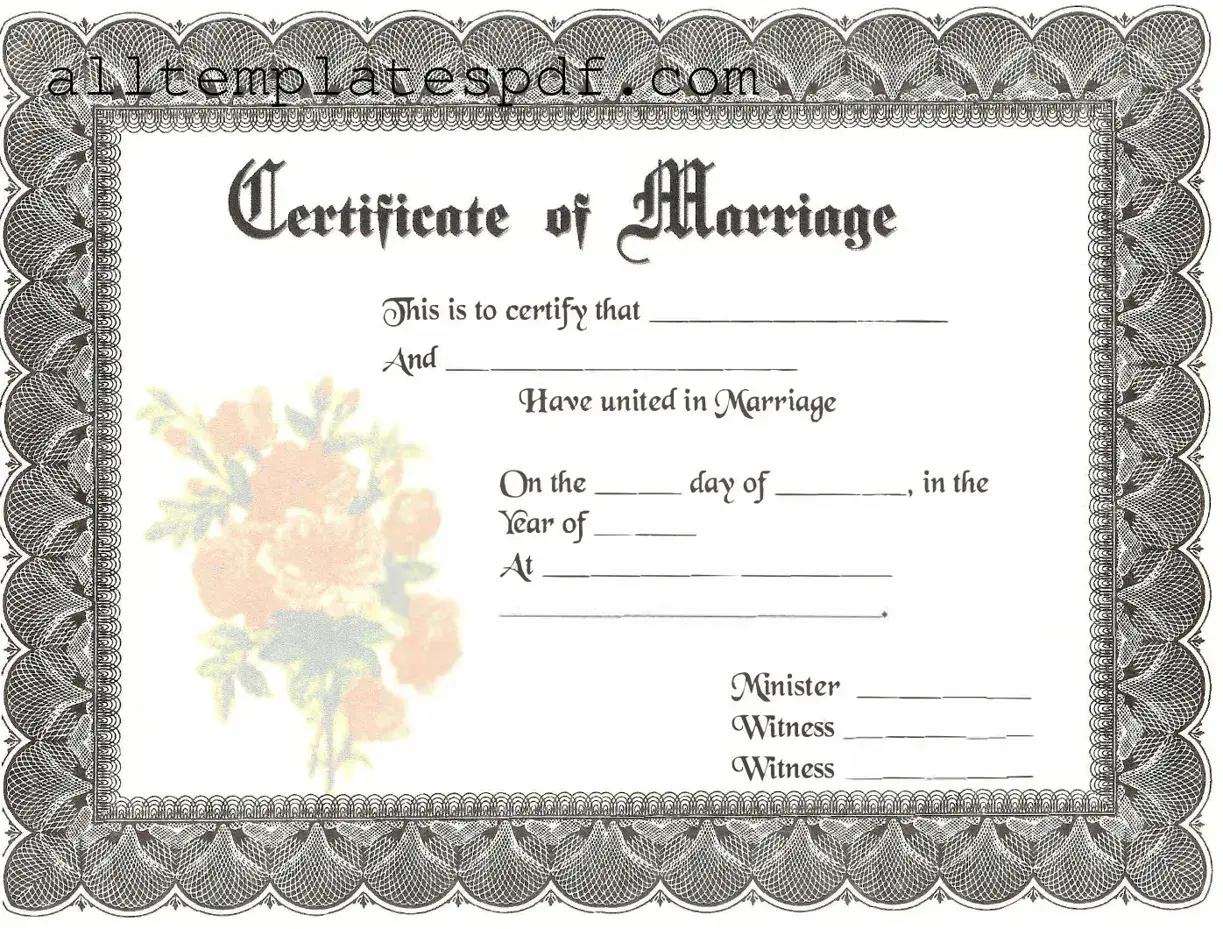Filling out a marriage certificate form can seem straightforward, but many people make common mistakes that can lead to delays or complications. One frequent error is providing incorrect personal information. This includes misspellings of names, wrong dates of birth, or incorrect addresses. It’s essential to double-check all entries to ensure accuracy.
Another common mistake involves not having the required identification ready. Many jurisdictions require specific forms of ID, such as a driver's license or passport. Failing to bring these documents can result in a wasted trip and added stress.
Some individuals overlook the need for witnesses. Most states require at least one or two witnesses to sign the marriage certificate. Not having witnesses present can invalidate the certificate, so it’s important to confirm this requirement beforehand.
People also sometimes forget to sign the form. While it may seem trivial, a missing signature can halt the processing of the marriage certificate. Each party must sign where indicated, and both signatures are crucial for the document's validity.
In addition, applicants may not be aware of the fees associated with obtaining a marriage certificate. Each county may have different fees, and forgetting to bring the correct payment can delay the process. Always check the fee schedule and be prepared.
Another mistake is not understanding the processing time. Some couples expect to receive their marriage certificate immediately after applying, but processing can take several days or even weeks. Planning ahead is vital to avoid any surprises.
Lastly, individuals may not read the instructions carefully. Each form may have specific guidelines that must be followed. Ignoring these instructions can lead to errors that require re-submission, wasting time and effort. Taking the time to read and understand the requirements can save a lot of hassle in the long run.
